Opinion
Policy blunders in agriculture:
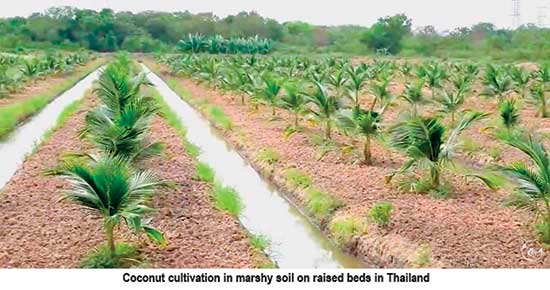
When will our leaders learn?
By Dr PARAKRAMA WAIDYANATHA
Blunders in state agriculture policy making has been rampant, and the need for our leaders to consult experts in policy making cannot be overstated. Let us dwell into some of the blunders. The ‘Yahapalana’ regime banned glyphosate herbicide use, but yielded when alternative herbicides used in tea had residue levels above allowable limits in the made tea, leading to serious tea marketing problems. Consequently, the re-use of glyphosate in tea and rubber only, but not for other crops, was approved! Rubber industry never asked for it because it is not critically needed, as weeds are essentially managed in rubber plantations with cover crops. On the other hand, coconut plantations have the serious problem of managing the highly competitive grasses, and research has established that their control with glyphosate yielded 38% more as against only 18% when grasses were slashed.
Toxin-free agriculture project collapse
Then the Yahapalana regime proceeded pell-mell from its commencement in 2015 promoting organic farming and overlooking conventional farming. The Strategic Enterprises Management Agency (SEMA) was totally transformed into an institute for promoting the so-called ‘toxin –free’ farming activities. The chief visionary of the programme was, of course, the then President. Neither the Ministry of Agriculture nor the Department of Agriculture were consulted, but compelled to carry out various short-sighted, organic farming- related activities. The officials meekly yielded. Ven Ratana thero, M.P, who was virtually the second in command in the ill-fated project, produced his own fertilizer named ‘Pivithuru Pohora’., running a factory in Mahaweli System B!
A team of senior retired agricultural scientists, who visited the site to examine the performance of this ‘wonder fertilizer’, was confidentially told by the farmers that the paddy crop turned yellow following application of Pivituru Pohora, a clear sign of nitrogen deficiency, and they then secretively applied urea! Why ‘secretively’, because they were selling the produce to the daughter of a top politician in Polonnaruwa as ‘organic paddy’, at Rs 10/kg higher than the conventional paddy! The ‘Pivituru Pohora’ was obviously sold to farmers without adequate testing: the Department of Agriculture trials at Aralaganwila did not show response to that fertilizer!
The SEMA toxin free project too was a total failure and was closed down in 2019 as a consequence!
New government making
the same blunder
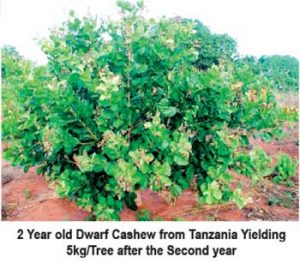 The new government has sadly failed to learn a lesson from the failure of the organic agriculture and associated pursuits of the previous regime! The new President, in his policy statement, announced his commitment to make the country totally organic in the next ten years! And the Governor of the Eastern Province, overwhelmed with organic farming, is compelling the officials to only promote it in the Province!
The new government has sadly failed to learn a lesson from the failure of the organic agriculture and associated pursuits of the previous regime! The new President, in his policy statement, announced his commitment to make the country totally organic in the next ten years! And the Governor of the Eastern Province, overwhelmed with organic farming, is compelling the officials to only promote it in the Province!
The whole world has yet only 2% in organic farming of which 66% is in pastures (for the rich to eat organic beef steaks!), only the balance being in other crops. Organic agriculture is expanding by only at 10% of its farm extent annually, implying that it will take at least 35 years for the entire world to be totally in it! Will it ever happen? The whole world moved away from organic farming from about the 1820s because it could not produce the global food demand. Vaclav Smil, distinguished Professor, University of Manitoba, for example, in 1987, estimated that 40% of today’s population is alive, thanks to the Haber-Bosch process of synthesizing ammonia.. However, organic farming may be promoted as much as possible, as organic food fetches a premium price giving good incomes to the farmer and , in any case, adding organic matter to our soils is highly beneficial. Total banning of agrochemicals is, however, never attainable! The detrimental issue is its excessive use. What is critically needed is to educate the farmers in judicious use of agrochemicals. No government in the recent past has addressed this vital issue effectively.
The oil palm fiasco
The plantation companies wanted to expand its cultivation to 20,000ha from its current 11,000 ha replacing some unproductive rubber with it. The Yahapalana Cabinet approved it several years ago, following which the plantations set up nurseries with imported high yielding hybrid seeds at a cost of some Rs500 million. The then President, however, went back on the Cabinet decision suspending its cultivation expansion! It would appear that the presidential decision was on the basis of a highly flawed report by the Central Environmental Authority, which has been totally rejected by the majority of scientists conversant in the matter, including the Coconut Research Institute, the organization mandated for oil palm research.
The outcry of villagers living close to oil palm plantations in the south was that oil palm dries up the soil and water bodies in their villages! Scientific evidence does not at all support this contention. The research evidence is that per unit area of land rubber and oil palm evapo-transpiration rates are comparable, and more importantly, whereas the water footprint, that is, the volume of water required to produce one metric ton of raw rubber is 32,410 cubic metres, that needed to make a ton of crude palm oil is only 19,148! In any case, the responsible institutions should have carried out a comprehensive hydrological study, comparing an exclusively oil palm area vis a vis a totally rubber area, to convince the villagers and policy makers. The politicians totally backed the villagers’ protests, obviously because of the then pending general elections. And one government politician in the south even proceeded to fell an oil palm tree in the wilderness, with the media coverage, to impress the villagers, just before the election! Even the Minister of Plantation Industries, a southerner has apparently meekly heeded the villagers’ objections. Being a qualified medical doctor, he should have gone on scientific evidence and correctly briefed the people and the President too.
President Gotabaya Rajapaksa has banned further oil palm cultivation in Sri Lanka several months ago. It is obvious that he has been totally misinformed on the subject. The benefits of oil palm are huge. It is the number one vegetable oil in the world, producing 35% of the global vegetable oil demand from 19 million hectares as against the number two, soybean, which produces only 28% of the oil from 147 million hectares, because of its very low productivity being only about a tenth of oil palm. Coconut yields only one fifth that of oil palm. Over the last 50 years, its production globally has increased 30 fold from less than 2.5 million MT in 1970 to over 70 million. More than a third of the global oil palm plantations are in the hands of small farmers, especially in Malaysia and Indonesia, where many are shifting from other crops such as rubber to oil palm because of the much higher returns. The Table below shows that the returns from oil palm in the local scenario is far more that of the other three plantation crops.
Palm oil and health
 Some argue that palm oil has health risks. In fact, its cholesterol elevating saturated fat (palmitic acid) content is only about 45%, whereas that of coconut oil is over 70%. However, both these oils have a number of other health benefits. Palm oil has the advantage of having 39% linoleic acid, a monounsaturated fatty acid, (the same principal fatty acid as in olive oil), that lowers the bad cholesterol but does not affect the good cholesterol.
Some argue that palm oil has health risks. In fact, its cholesterol elevating saturated fat (palmitic acid) content is only about 45%, whereas that of coconut oil is over 70%. However, both these oils have a number of other health benefits. Palm oil has the advantage of having 39% linoleic acid, a monounsaturated fatty acid, (the same principal fatty acid as in olive oil), that lowers the bad cholesterol but does not affect the good cholesterol.
However, the European Food Safety Authority (EFSA) pronounced a few years back that consumption of palm oil in moderation has no cancer risk. Further, a more recent, comprehensive review in the Journal, Nutrients (2019), 10 reputed scientists concluded that there is no direct or indirect evidence of palm oil consumption being associated with cancer in human beings.
It is unfortunate that the President did not consult the Coconut Research Institute, the organization mandated for R & D on oil palm, before making this vitally important national decision. Further, a team of sixteen senior scientists including eleven academics(professors) well versed in the subject, wrote to the President recently seeking an appointment to brief him on the subject, but, was told by his office that already a policy decision has been made on the matter! Must not faulty policies be rectified?
Expand coconut in the dry zone for oil?
Further, the government has now apparently rushed into a decision to plant up 50,000 ha coconut in the dry zone under drip irrigation for increasing oil production. It would appear that coconut is already grown in nearly all areas in the dry zone suitable for it. Is the water available during the droughts for irrigation?. Further, there is strong research evidence that with global warming and temperatures shooting up during droughts, especially in the months of April and August, coconut pollen germination is inhibited in the dry zone, causing poor fruit set. Have these factors been taken into consideration. Ideally the crop for the balance dry zone appears to be cashew, which can bring in more income if grown scientifically than coconut. We do not have highly productive cashew dwarf hybrids of the type in the picture.
They should be secured from other countries perhaps through a germplasm exchange programme. However, it is reported that the University of Wayamba has recently produced hybrids with a yield potential of 13-15kg/tree/yr after the 4th year and at least they should be actively promoted among growers.
Alternative land for oil palm
If the government is reluctant to grow oil palm in the wet zone rubber lands, an alternative is to use the uncultivated paddy fields which amount about 60,000 ha of which nearly 50,000 are in the wet zone. The appropriate ill-drained soils should be drained for the purpose and oil palm grown on raised beds as seen in the picture, being done for coconut in Thailand. The excess water can be retained in ponds at the bottom of the catena for fish culture. Such cultivation could provide our entire vegetable oil demand, saving some Rs 40 billion spent on import of palm oil. Alternative crops for these lands are of course coconut, vegetables and horticultural crops. The Agrarian Development Act of 2000 may need to be amended for the purpose.
Learning from India
We have lessons to learn from India both on oil palm and policy making! India is targeting cultivation of 2 million hectares of oil palm by 2030, replacing much of its nine seasonal oil crops from irrigated lands because of their poor yields (usually less than 1ton/ha/season). Already over 400,000 ha have been planted to it . India has a huge vegetable oil import bill much of it being for palm oil!
The decision to expand oil palm cultivation was made by the Planning Commission of India after extensive deliberations by the experts in the Commission. The Commission was first set up during the Nehru regime in the 1950s, and the present Prime Minister has changed its name to the National Technology Commission (Niti Aayog in Hindi). Its functions amongst others are creation of innovation and knowledge, and advising the government on major developmental policy issues. Sri Lanka should necessarily follow suit and have such a commission so that leaders act on the advice of experts, and not on misinformation of ‘Dicks, Toms and Harrys’!
- News Advertiesment
See Kapruka’s top selling online shopping categories such as Toys, Grocery, Flowers, Birthday Cakes, Fruits, Chocolates, Clothing and Electronics. Also see Kapruka’s unique online services such as Money Remittence,News, Courier/Delivery, Food Delivery and over 700 top brands. Also get products from Amazon & Ebay via Kapruka Gloabal Shop into Sri Lanka.
Opinion
Take Human Rights seriously, not so much the council or office
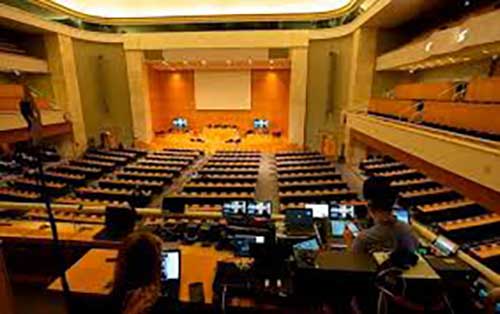
By Dr Laksiri Fernando
The 46th Session of the UN Human Rights Council started on 22 February morning with obvious hiccups. The Office, to mean the Office of the UN High Commissioner for Human Rights, finally decided to hold all sessions virtually online, only the President of the Council and the assistants in the high table sitting at the UN Assembly Hall in Geneva. The President, Ms. Nazhat Shammen Khan, Ambassador from Fiji in Geneva, wearing a saree, was graceful in the chair with empty seats surrounding.
In the opening session, the UN General Assembly President, UN General Secretary, UN High Commissioner for Human Rights, and Head of Foreign Affairs, Switzerland (as the host country), addressed remotely the session. In fact, there was no need for Switzerland to have a special place, as the UN is independent from any host country. Switzerland is fairly ok, however, if this tradition is followed, the UN General Assembly may have to give a special place to the US in New York.
Initial Addresses
UN General Secretary, Antonio Guterres’ address could have been quite exemplary if he gave a proper balance to the developed and developing countries. He talked about racism and fight against racism but did not mention where racism is overwhelmingly rampant (US and Europe) and what to do about it. Outlining the human rights implications of Covid-19 pandemic, he made quite a good analysis. It was nice for him to say, ‘human rights are our blood line (equality), our lifeline (for peace) and our frontline (to fight against violations).’ However, in the fight against violations, he apparently forgot about the ‘blood line’ or the ‘lifeline’ quite necessary not to aggravate situations through partiality and bias. He never talked about the importance of human rights education or promoting human rights awareness in all countries.
His final assault was on Myanmar. Although he did not call ‘genocide,’ he denounced the treatment of Rohingyas as ethnic cleansing without mentioning any terrorist group/s within. His call for the release of Aung San Suu Kyi and other civilian leaders undoubtedly should be a common call of all. However, he did not leave any opening for a dialogue with the military leaders or bring back a dialogue between Aung San and Min Aung, the military leader. With a proper mediation, it is not impossible. Calling for a complete overhaul as the young demonstrators idealistically claim might not be realistic.
 High Commissioner Michelle Bachelet’s address was brief and uncontroversial this time without mentioning any country or region. It is clear by now perhaps she is not the real author of the Report against Sri Lanka, but someone probably hired by the so-called core-group led by Britain. Her major points were related to the coronavirus pandemic trying to highlight some of the socio-economic disparities and imbalances of policy making that have emerged as a result. The neglect of women, minorities, and the marginalized sections of society were emphasized. But the poor was not mentioned. As a former medical doctor, she also opted to highlight some of the medical issues underpinning the crisis.
High Commissioner Michelle Bachelet’s address was brief and uncontroversial this time without mentioning any country or region. It is clear by now perhaps she is not the real author of the Report against Sri Lanka, but someone probably hired by the so-called core-group led by Britain. Her major points were related to the coronavirus pandemic trying to highlight some of the socio-economic disparities and imbalances of policy making that have emerged as a result. The neglect of women, minorities, and the marginalized sections of society were emphasized. But the poor was not mentioned. As a former medical doctor, she also opted to highlight some of the medical issues underpinning the crisis.
Then came the statements from different countries in the first meeting in the following order: Uzbekistan, Colombia, Lithuania, Afghanistan, Poland, Venezuela, Finland, Fiji, Moldova, Georgia, Kazakhstan, Equatorial Guinea, Vietnam, Belgium, and Morocco. The obvious purposes of these statements were different. Some countries were apparently canvassing for getting into the Human Rights Council at the next turn perhaps for the purpose of prestige. Some others were playing regional politics against their perceived enemies. This was very clear when Lithuania and Poland started attacking Russia.
But there were very sincere human rights presentations as well. One was the statement by the President of Afghanistan, Mohammad Ashraf Ghani. He outlined the devastating effects that Afghanistan had to undergo during the last 40 years, because of foreign interferences. The initial support to Taliban by big powers was hinted. His kind appeal was to the UN was to go ‘beyond discourse to practice’ giving equal chance to the poor and the developing countries to involve without discrimination.
Controversial Presentations
China’s Foreign Affairs Minister, Wang Yi, made his presentation almost at the end of the first day. This is apparently the first time that China had directly addressed the Human Rights Council. Beginning with outlining the devastating repercussions of the coronavirus pandemic he stressed that the world should face the challenges through ‘solidarity and cooperation.’ He broadened the concept to human rights solidarity and cooperation. His expressed views were quite different to the others, particularly to the Western ones.
He frankly said that what he expresses are the views of China on human rights without claiming those are absolute truths or forcing others to believe or implement them. There were four main concepts that he put forward before the member countries. First, he said, “We should embrace a human rights philosophy that centres on the people. The people’s interests are where the human rights cause starts and ends.” Second, he said, “we should uphold both universality and particularity of human rights. Peace, development, equity, justice, democracy, and freedom are common values shared by all humanity and recognized by all countries.” “On the other hand,” he said, “countries must promote and protect human rights in light of their national realities and the needs of their people.”
“Third,” he said, “we should systemically advance all aspects of human rights. Human rights are an all-encompassing concept. They include civil and political rights as well as economic, social, and cultural rights.” He then emphasized, “Among them, the rights to subsistence and development are the basic human rights of paramount importance.” Fourth, “we should continue to promote international dialogue and cooperation on human rights. Global human rights governance should be advanced through consultation among all countries.”
It was on the same first day before China, that the United Kingdom launched its barrage against several countries not sparing Sri Lanka. The Foreign Secretary, Dominic Raab, delivered the statement from top to bottom attacking alleged violating countries on human rights. But there was no mentioning of Israel for the repression of Palestinians or the systemic racism rampaging in the United States, including the 6 January attacks on the Capitol by extremist/terrorist groups.
His first sermon was on Myanmar without acknowledging the British atrocities or mismanagement of this poor and diverse country during the colonial period. He was quite jubilant over implementing sanctions and other restrictions over the country. Many sanctions, in my opinion, are extortions. Undoubtedly, Aung San Suu Kyi and other leaders should be released, and democracy restored. This is a task of the whole council and when one or two countries try to grab the credit, there can be obvious reservations of others.
His further scathing attacks were against Belarus, Russia, and China. Some appeared factually correct but not necessarily the approach or the motives genuine. The following is the way he came around Sri Lanka. He said,
“Finally, we will continue to lead action in this Council: on Syria, as we do at each session; on South Sudan; and on Sri Lanka, where we will present a new resolution to maintain the focus on reconciliation and on accountability.”
‘Action’ to him basically means repeatedly passing resolutions, of course imposing economic and other sanctions. He said, “as we do at each session”; like bullying poor or weak countries at each session. Can there be a resolution against Russia or China? I doubt it.
What would be the purpose of presenting a resolution against Sri Lanka? As he said, “to maintain the focus on reconciliation and on accountability.” This will satisfy neither the Tamil militants nor the Sinhalese masses. But it might satisfy the crafty Opposition (proxy of the defeated last government). This is not going to be based on any of the actual measures that Sri Lanka has taken or not taken on reconciliation or accountability. But based on the ‘Authoritarian and Hypocritical Report’ that some anti-Sri Lankans have drafted within the Office of the High Commissioner for Human Rights. This what I have discussed in my last article.
In this context, successful or not, the statement made by the Sri Lanka’s Minister of External Affairs, Dinesh Gunawardena, in rejecting any resolution based on the foxy Report of the Office of the UN High Commissioner for Human Rights, in my concerned opinion, is absolutely correct.
Opinion
President’s energy directives ignored by the Power Ministry: Another Point of View
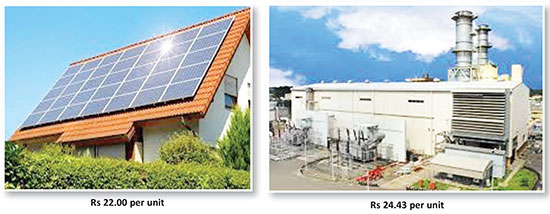
Dr Tilak Siyambalapitiya
Dr Janaka Rathnasiri laments (The Island 19 Feb 2021) that the Power Ministry has ignored the President’s directive to draw 70% of energy from renewable sources by 2030. I saw the approved costs of electricity production for 2019, published by the Public Utilities Commission (PUCSL).
PUCSL has also approved the prices to sell electricity to customers. Although various customers pay at various “approved” prices, the average income from such “approved” prices in 2019 was Rs 17.02 per unit. It is not only the Ministry, according to Dr Rathnasiri, ignoring the President; PUCSL is also breaking the law, which says prices and approved costs should be equal.
 So there is already an illegal gap of Rs 21.59 minus 17.02 = Rs 4.57 per unit of electricity sold. If electricity prices are not to be increased, as stated by many in the government and PUCSL, let us say the following: Distribution costs should decrease by 0.57 Rs per unit. Generation costs should decrease by Rs 4.00 per unit.
So there is already an illegal gap of Rs 21.59 minus 17.02 = Rs 4.57 per unit of electricity sold. If electricity prices are not to be increased, as stated by many in the government and PUCSL, let us say the following: Distribution costs should decrease by 0.57 Rs per unit. Generation costs should decrease by Rs 4.00 per unit.
PUCSL also published the approved cost of purchasing or producing electricity from various sources for 2019. The actual energy values were different to what was approved, but let us stick to PUCSL approved figures:
I suggest Dr Rathnasiri fills-up the following table, to show how much electricity will cost in 2030 to produce and deliver, if the President’s 70% target is to be achieved and for PUCSL to abide by the law. Let us assume that electricity requirement in 2030 will be double that of 2019.
 Since PUCSL has to save Rs 4 from 13.92, the average selling price for energy should be Rs 13.92 minus 4.00 = Rs 9.92. With a target network loss of 7% (in 2019 it was 8.4%), the average cost of production has to be Rs 9.27 per unit. Eight cages have to be filled-up by Dr Rathnasiri.
Since PUCSL has to save Rs 4 from 13.92, the average selling price for energy should be Rs 13.92 minus 4.00 = Rs 9.92. With a target network loss of 7% (in 2019 it was 8.4%), the average cost of production has to be Rs 9.27 per unit. Eight cages have to be filled-up by Dr Rathnasiri.
In 2012, PUCSL approved the energy cost of electricity produced from coal power to be 6.33 Rs per kWh. In 2019, PUCSL approved 9.89 (56% increase). For renewable energy, it was 13.69 in 2012, and 19.24 in 2019 (a 40% increase, but double the price of electricity from coal fired generation). In 2012, rooftop solar was not paid for: only give and take, but now paid Rs 22, against Rs 9.89 from coal. There seems to be something wrong. The price reductions of renewable energy being promised, being insulated from rupee depreciation, are not happening? Either Sri Lanka must be paying too little for coal, or it may be renewable energy is severely over-priced?
On coal we hear only of some corruption every now and then; so Sri Lanka cannot be paying less than it costs, for coal.
Enough money even to donate
vaccines
 Another reason for the Ministry of Power to ignore the President’s directive may be the Ministry’s previous experience with similar Presidential directives. In 2015, the President at that time cancelled the Sampur coal-fired power plant, and the Ministry faithfully obliged. That President and that Prime Minister then played ball games with more power plants until they were thrown out of power, leaving a two-billion-dollar deficit (still increasing) in the power sector. Not a single power plant of any description was built.
Another reason for the Ministry of Power to ignore the President’s directive may be the Ministry’s previous experience with similar Presidential directives. In 2015, the President at that time cancelled the Sampur coal-fired power plant, and the Ministry faithfully obliged. That President and that Prime Minister then played ball games with more power plants until they were thrown out of power, leaving a two-billion-dollar deficit (still increasing) in the power sector. Not a single power plant of any description was built.
Where is this deficit? You do not have to look far. In the second table, replace 24.43 with 9.89, to reflect what would have happened if Sampur was allowed to be built. The value 12.79 will go down to 8.55, well below the target of Rs 9.27 per unit to produce. Not only would CEB and LECO report profits, but the government too could have asked for an overdraft from CEB to tide over any cash shortfalls in the treasury. All this with no increase in customer prices. Producers of electricity from renewable energy could enjoy the price of 19.24 Rs per unit. And that blooming thing on your rooftop can continue to enjoy Rs 22 per unit. The Minister of Power, whom Dr Rathnasiri wants to replace with an army officer, would have been the happiest.
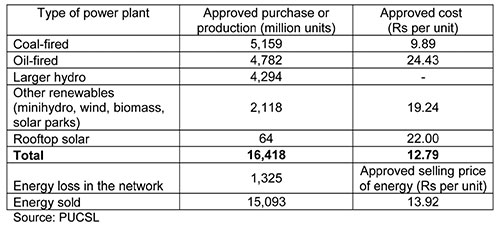 In the absence of Sampur (PUCSL’s letter signed by Chairman Saliya Mathew confirmed cancellation and asked CEB not to build it), PUCSL approved electricity to be produced at Rs 21.59 and sold at Rs 17.02 per unit. The annual loss would be Rs (21.59 – 17.02) x 15,093 = Rs 69 billion per year of approved financial loss. Sri Lanka has a Telecom regulator, an Insurance regulator, a Banking regulator, who never approve prices below costs. Sometime ago the telecom regulator asked the operators to raise the prices, when operators were proposing to reduce prices amidst a price war. But the electricity industry regulator is different: he approves costs amounting to 27% more than the price, not just once but, but continuously for ten long years !
In the absence of Sampur (PUCSL’s letter signed by Chairman Saliya Mathew confirmed cancellation and asked CEB not to build it), PUCSL approved electricity to be produced at Rs 21.59 and sold at Rs 17.02 per unit. The annual loss would be Rs (21.59 – 17.02) x 15,093 = Rs 69 billion per year of approved financial loss. Sri Lanka has a Telecom regulator, an Insurance regulator, a Banking regulator, who never approve prices below costs. Sometime ago the telecom regulator asked the operators to raise the prices, when operators were proposing to reduce prices amidst a price war. But the electricity industry regulator is different: he approves costs amounting to 27% more than the price, not just once but, but continuously for ten long years !
That is 370 million dollars per year as of 2019, the economy is spending, and for years to come, to burn oil (and say we have saved the environment). Did the Minister of Health say we are short of 160 million dollars to buy 40 million doses of the vaccine? Well, being a former Minister of Power, she now knows which Presidential “order” of 2015 is bleeding the economy of 370 million dollars per year, adequate to buy all vaccines and donate an equal amount to a needy country.
Prices are the production costs approved by PUCSL for 2019. The selling price approved by the same PUCSL was Rs 9.27 per unit.
Opinion
Confusion on NGOs and NSOs in Sri Lanka
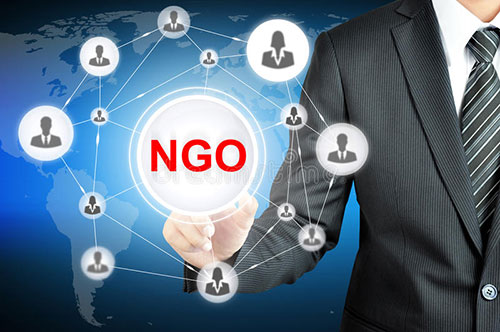
If you listen to politicians and journalists here, you will hear of that curious creature rajya novana sanvidane, a Non-State Organization (NSO). Where do you get them? In the uninstructed and dead minds of those who use those terms. In the real world, where politicians and journalists have developed minds, there are Non-Governmental Organizations (NGO). The United Nations is an organization set up by state parties, not by governments. It is true that agents of states, governments, make the United Nations work or fail. Governments may change but not the states, except rarely. When Eritrea broke away from Ethiopia, a new state was formed and was so recognised by the United Nations. However, the LTTE that tried to set up another state was crushed by the established state that it tried to break away from, and the UN had nothing to do with them.
This entirely unnecessary confusion, created out of ignorance, is so destructive that organizations completely loyal to the existing state, are made to be traitorous outfits, for they are ‘non-state organizations’ within the state. There are citizens of each state, but no citizens of any government. Government is but an instrument of the state. In most states there are organizations, neither of the state nor of government: religious organizations including churches. But none of them is beyond the pale of the state.
Those that speak of rajya novana sanvidane give that name partly because they have no idea of the origin of non-governmental organizations. NGOs came into the limelight, as donor agencies, noticed that some governments, in East Africa, in particular, did not have the capacity and the integrity to use the resources that they provided. They construed, about 1970, that NGOs would be a solution to the problem. Little did they realize that some NGOs themselves would become dens of thieves and brigands. I have not seen any evaluation of the performance of NGOs in any country. There was an incomplete essay written by Dr. Susantha Gunatilleka. NGOs are alternatives to the government, not to the state.
Our Constitution emphatically draws a distinction between the government and state, and lays down that the President is both Head of Government and Head of State (Read Article 2 and Article 30 of the Constitution.) It is as head of state that, he/she is the Commander of the Armed Forces, appoints and receives ambassadors and addresses Parliament annually, when a prorogued Parliament, reconvenes. He/she presides over the Cabinet as head of government. The distinction is most clear, in practice, in Britain where Queen Elizabeth is the head of state and Boris Johnson is the Prime Minister and head of government. However, in principle, Johnson is the Queen’s First Minister appointed by the sovereign, and resigns by advising her of his decision to do so.
In the US and in India the term ‘state’ has special significance. In India there is a ‘rajya sabha’ (the Council of States) whose members represent constituent States and Union Territories. Pretty much the same is true of the United States. In the US, executive power is vested in the President and heads the administration, government in our parlance. The Head of State does not come into the Constitution but those functions that one associates with a head of state are in the US performed by the President of the Republic. The US President does not speak of my state (mage rajaya) but of my administration, (mage anduva). Annually, he addresses Congress on the State of the Union. Our present President must be entirely familiar with all this, having lived there as a citizen of the US for over a decade. It is baffling when someone speaks of a past state as a traitor to that same state. It is probable that a government was a traitor to the state. ‘Treason against the United States, shall consist only in levying war against them, or in adhering to their (States’) enemies, giving them aid and comfort’. That a state was a traitor to the same state is gobbledygook.
Apart from probable confusion that we spoke of in the previous paragraph, it is probable that a president and other members of a government, including members of the governing party here, find it grandiloquent to speak of his/her/their state (mage/ape rajaya), rather than my government (mage anduva) or Sirisena anduva’ and not Sirisena state; it was common to talk of ‘ape anduva’ in 1956; politicians in 1956 were far more literate then than they are now.
When translating from another language, make sure that you understand a bit of the history of the concept that you translate. A public school in the US is not the same as a public school in the UK.
MAHADENAMUTTA









